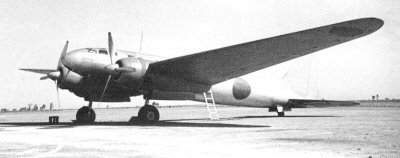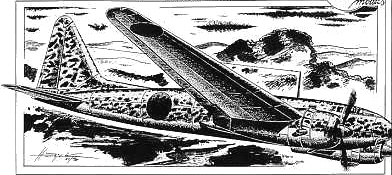Tachikawa Ki.77



model box artwork



model box artwork
The aircraft that was eventually to be known as the Ki-77 was designed as a civilian long-distance record-breaking aircraft which would fly in the sub-stratosphere. It was hoped that its development would eventually lead to a future stratospheric transport aircraft. Work on the project began in March 1940, with further development being interrupted by the beginning of the Pacific War. Development resumed in the summer of 1942 under the designation of Ki-77, with the hopes that it could be used as a long-range communications aircraft that would help keep Japan in contact with the other Axis powers. Only two prototypes were completed, though they did achieve some unofficial speed records before the war's end.
Tachikawa Ki.77
Type: long range research aircraft
Service: Japanese Army Air Force (JAAF)
Crew: five
Armament: none
Reference: Francillon: 262, Mondey: n/a
Specifications:
Length: 50' 2.5" (15.3 m)
Height: 12' 7.5" (3.85 m)
Wingspan: 96' 7" (29.438 m)
Wing area: 856.373 sq. ft (79.56 sq. m)
Empty Weight: 15955 lbs (7237 kg)
Loaded Weight: 36872 lbs (16725 kg)
Propulsion:
No. of Engines: 2
Powerplant: Nakajima Ha-115 14-cylinder radial
Horsepower: 1170 hp each
Performance:
Range: 11,185 miles (18,000 km)
Cruise Speed: 186 mph (300 km/h)
Max Speed: 273 mph (440 km/h) at 15,090 ft (4600 m)
Climb to/in: 19,685 ft (6000 m) in 24 min 0 sec
Ceiling: 28,545 ft (8700 m)
Production: two aircraft built
Additional information on this aircraft can be found at Wikipedia
HERE.
For a very nice scale color drawing of this aircraft, see
here.
If you don't see the table of contents at the left of your screen, CLICK HERE to see the rest of this website!